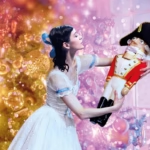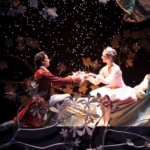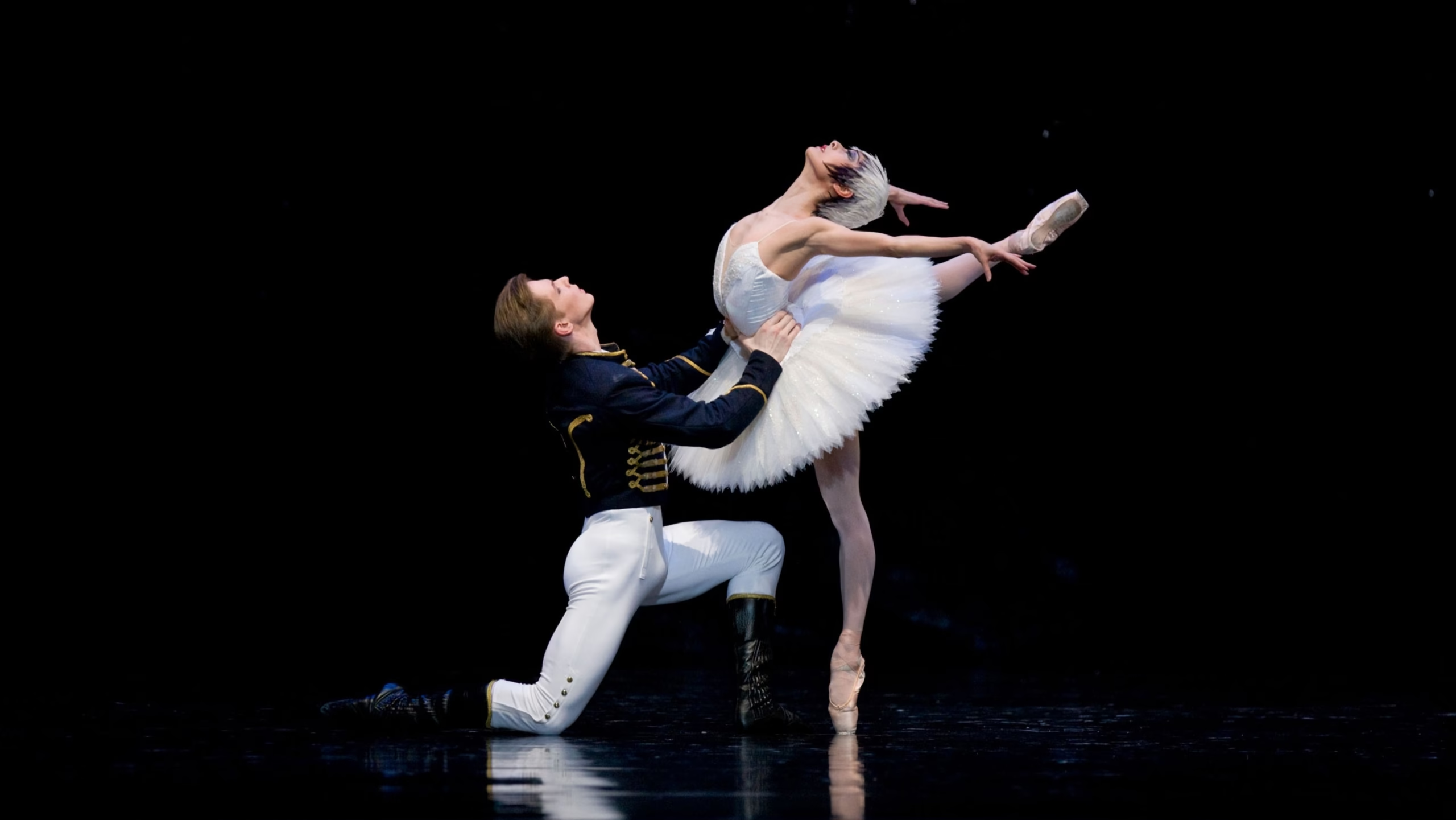Giselle, a cornerstone of the ballet repertoire, transcends mere performance art to become a profound exploration of human emotions, societal expectations, and supernatural themes. Its haunting tale of love, heartbreak, and redemption continues to resonate with audiences since its debut in Paris on June 28, 1841. This article delves into the multifaceted layers of Giselle, examining its choreography, dual narrative, cultural significance, musical landscape, and modern adaptations. As we traverse through the complexities of this timeless ballet, we unearth its relevance in today’s society, exploring how Giselle invites discussions about love, betrayal, empowerment, and the essence of humanity itself.
The Choreography and Its Evolution
The choreography of Giselle was originally conceived by a trio of creative geniuses: Jean Coralli, Jules Perrot, and Marius Petipa. Over the years, the ballet has undergone various reinterpretations, with notable contributions from directors like Kevin McKenzie who have breathed new life into the performance without compromising its emotional core. The fluidity and grace apparent in Giselle’s movements symbolize the fragility of her character—a pure-hearted peasant girl whose life is crushed under the weight of betrayal.
The Original Choreography’s Impact

The original choreography of Giselle set a monumental standard for ballet, characterized by its lyrical quality and emotional depth. It established a balance between technical precision and expressive storytelling, allowing dancers to convey profound narratives through physicality.
In the first act, Giselle’s innocence is portrayed through delicate and whimsical movements that reflect the joys of young love. As she dances, each pirouette and arabesque communicates her dreams, hopes, and fears. The choreography serves as an extension of her character—every graceful leap tells a story of burgeoning romance, while every subtle gesture encapsulates her vulnerability.
Conversely, the second act takes a darker turn, showcasing a more ethereal quality; Giselle transforms into a Wili, a spirit of vengeance. The choreography reflects her transition from a naive girl to a powerful entity filled with sorrow and rage. This duality in movement captures the complexity of her emotions, evoking a visceral response from the audience as they witness the impact of betrayal on her soul.
Reinterpretations and Modern Adaptations
As time progressed, Giselle found itself at the mercy of evolving artistic interpretations. Directors and choreographers have employed innovative techniques to reimagine the narrative and adapt it to contemporary sensibilities. Kevin McKenzie’s version, for instance, integrates elements of modern dance, enhancing the emotional landscape while preserving the ballet’s foundational elements.
Modern adaptations also explore the themes of gender roles and empowerment. By spotlighting Giselle’s journey from innocence to strength, these retellings provoke thought and discussion surrounding women’s experiences within society. They challenge audiences to reassess the implications of societal expectations and resilience in the face of adversity.
Moreover, technology has entered the realm of ballet in intriguing ways. Some productions incorporate multimedia elements, using projections and visual effects to amplify the emotional impact, creating a fusion between classical and modern aesthetics that appeals to younger generations. Through these innovative approaches, Giselle remains relevant, inviting new interpretations while retaining its core message of love and loss.
A Dual Narrative: Romance and Revenge
At its heart, Giselle embodies a compelling duality that captures the essence of the Romantic era—the juxtaposition of love and despair. The narrative unfolds like a breathtaking tapestry, interweaving themes of passion, betrayal, vengeance, and ultimately, redemption.
The Idyllic Romance of Act One

The first act immerses audiences in the idyllic world of rural France, filled with tender romances and hopeful dreams. The celebration of love is palpable; Giselle’s joyful interactions with Albrecht and her fellow villagers create an atmosphere brimming with optimism.
This serenity, however, serves as a backdrop for impending tragedy. The introduction of Duke Albrecht’s true identity and his infidelity abruptly shatters Giselle’s world. Her spiral into despair encapsulates the fragility of love, reminding us that even the most beautiful relationships can be tainted by deceit. The portrayal of this idyllic romance provides a stark contrast to the turmoil that ensues, highlighting the precarious nature of trust and devotion.
The Consequences of Deceit
As the plot thickens, Giselle’s heartache becomes a poignant commentary on the consequences of betrayal. The moment she succumbs to madness, driven by grief and despair, signifies a crucial transformation in her character. The emotional weight of her plight resonates deeply with audiences, inviting them to consider the broader implications of betrayal in their own lives.
This tragedy raises profound questions about the nature of forgiveness and revenge. In a contemporary context, we may ponder what defines our humanity: the capacity to forgive or the instinct to avenge. Giselle, now transformed into a Wili, embodies both pain and power, illustrating the duality inherent in all of us.
The complexities of her character offer fertile ground for discussions around emotional trauma and healing. Do we embrace forgiveness, seeking closure, or are we driven by the need for vindication? Giselle prompts us to introspectively examine our responses to heartbreak, illuminating the path toward understanding not just ourselves, but also the motivations of those around us.
Vengeance and Redemption in the Second Act
As Giselle transforms into a vengeful spirit, the stakes rise dramatically. The second act serves as a haunting reminder of the consequences faced by those who betray innocent love. The Wilis, spectral figures clad in white, embody the unresolved pain of young brides left at the altar, capturing a collective experience of loss and vengeance.
Through Giselle’s embodiment of these spirits, the ballet tackles complex themes surrounding retribution. Her interactions with Albrecht reveal a struggle between lingering love and the desire for vengeance. In a striking juxtaposition, the audience witnesses the battle between love’s enduring power and the suffocating weight of betrayal.
Ultimately, Giselle’s ability to forgive Albrecht creates a moment of catharsis. This pivotal scene challenges the notion of revenge, suggesting that true strength lies in compassion and understanding. By embracing forgiveness, Giselle transcends her earthly bounds, offering a window into the transformative power of love and the possibility of redemption even in the face of profound betrayal.
The Musical Landscape of Giselle

Accompanying the ballet is the evocative score composed by Adolphe Adam, which enriches the emotional dimensions of the story. The music acts as a narrative device, guiding the audience through the peaks of joy and valleys of sorrow experienced by Giselle.
The Emotional Resonance of Adolphe Adam’s Score
Adolphe Adam’s composition for Giselle stands as a testament to the power of music in storytelling. The haunting melodies and intricate harmonies evoke deep emotional responses, transforming the ballet into a sensory experience.
In the first act, the score encapsulates the lightheartedness of young love, weaving together motifs that reflect the innocence and warmth of Giselle and Albrecht’s romance. The buoyant rhythms enhance the joy of their interactions, drawing audiences into their idyllic world. It’s a musical embodiment of hope, painting a vivid picture of youthful dreams and aspirations.
As the narrative shifts into darker territory, Adam’s music adapts to mirror the emotional turbulence. The melancholic undertones reflect Giselle’s heartbreak and the unfolding tragedy, creating a palpable sense of tension. The music becomes a character in its own right, reinforcing the emotional weight of the story and guiding audiences through its highs and lows.
The Role of Music in Enhancing Storytelling
The interplay between music and choreography in Giselle serves as a reminder of how sound can evoke deep emotional responses and enhance storytelling across mediums. The rhythmic patterns complement the movements, creating a seamless harmony between the two.
In moments of stillness, the music carries the weight of silence, amplifying emotional intensity. For instance, when Giselle learns of Albrecht’s betrayal, the accompanying score underscores the gravity of the moment, leaving audiences breathless. The combination of movement and sound elicits empathy, forging connections between viewers and the characters.
Furthermore, the way music evokes personal experiences highlights its universal appeal. Just as Giselle’s story speaks to the heart, so too do the melodies resonate with audiences, drawing listeners into a shared emotional reality. This connection emphasizes the timeless nature of the human experience—love, loss, joy, and pain—all captured beautifully within the musical landscape of Giselle.
Contemporary Musical Innovations
In recent performances, the integration of contemporary music elements has emerged as a fascinating trend. Some adaptations blend classical scores with modern compositions, introducing a fresh auditory experience that aligns with contemporary sensibilities.
These innovative approaches allow productions to resonate with younger audiences, bridging the gap between classical and modern art forms. The incorporation of electronic music, for instance, enhances the emotional ambiance while maintaining the integrity of the original score. Such adaptations invite fresh interpretations, fostering engagement with Giselle’s themes in novel ways.
Moreover, the dialogue between classical and contemporary music showcases the evolution of ballet as an art form. As composers experiment with hybrid sounds, they create a dynamic environment where tradition and innovation coexist, ensuring that Giselle not only endures but flourishes in the modern cultural landscape.
Cultural Significance and Interpretations

Giselle’s cultural significance extends far beyond the confines of the ballet stage, influencing diverse artistic domains—from literature to film. Its themes resonate across cultures and generations, prompting reflections on hope amidst adversity, love, and societal expectations.
The Legacy of Giselle in Arts and Literature
Over the years, Giselle has inspired countless artists, writers, and filmmakers. The ballet’s themes of love, betrayal, and redemption echo throughout various forms of storytelling, creating a rich legacy that transcends its original medium.
For instance, Disney’s Enchanted introduces a character named Giselle, portraying a distinctly optimistic and naive woman navigating the harsh realities of life. This adaptation underscores the timeless essence of Giselle’s character, capturing the core struggles of femininity and resilience in a contemporary setting. Here, Giselle’s journey becomes a metaphor for the pursuit of happiness and self-discovery against societal odds.
Moreover, the ballet invites literary scholars to dissect its narrative through various lenses, including feminist theory and psychological analysis. Giselle’s journey from innocence to empowerment sheds light on women’s roles in society, providing a framework for discussing how narratives are often shaped by male actions and societal expectations. The ballet thus acts as a mirror reflecting broader themes within gender studies, challenging audiences to unpack systemic structures that drive characters’ choices and actions.
Reflections on Women’s Roles in Society
Giselle’s story compels audiences to engage with critical conversations about women’s roles in society. Her journey illustrates how societal norms dictate female agency, often relegating women to positions shaped largely by male decisions.
Giselle’s initial characterization as a passive lover highlights the challenges women face when striving for autonomy. Yet, her subsequent transformation into a Wili illuminates a shift towards empowerment. In her spectral state, Giselle exhibits immense strength and control, prompting us to consider how women can reclaim their narratives and find power in their voices.
These reflections resonate strongly in today’s discourse surrounding feminism and social justice. Giselle serves as a catalyst for discussions regarding the importance of female empowerment, encouraging audiences to evaluate the societal forces that shape women’s identities. By reexamining Giselle’s journey, we foster a deeper understanding of the systemic barriers that persist and inspire action towards a more equitable future.
Global Interpretations and Cultural Contexts
Giselle’s influence is not confined to Western narratives. The ballet’s universal themes allow for a myriad of interpretations across diverse cultural contexts. Each retelling offers a unique perspective, enriching the narrative with local color and sensitivity.
For example, in some Asian adaptations, the story may intertwine elements of folklore, incorporating traditional music and dance styles to emphasize cultural heritage. These adaptations honor the ballet’s original themes while contextualizing them within specific cultural frameworks, thereby expanding its reach and relevance.
The global interpretations of Giselle highlight the ballet’s adaptability, demonstrating how a classic work can transcend cultural boundaries. As different communities engage with its narrative, the ballet continues to evolve while preserving its essence, ensuring its place as a timeless piece of art.
Conclusion

Giselle, with its exquisite choreography, nuanced narrative, and emotional depth, remains a timeless masterpiece that continues to capture the hearts and minds of audiences worldwide. Through its exploration of love, betrayal, vengeance, and redemption, it invites reflection on the complexities of human relationships and societal expectations.
The ballet’s dual narrative resonates deeply in contemporary discussions surrounding gender roles, emotional trauma, and the quest for identity. Each retelling fosters a richer understanding of the narratives that shape our lives, reminding us that even in tragedy, there lies an opportunity for profound transformation and insight.
As modern adaptations continue to breathe new life into Giselle, we observe a vibrant tapestry woven through time—an ever-evolving dialogue between past and present that underscores the timelessness of love, loss, and the human experience. Through the lens of this iconic ballet, we are encouraged to confront our own emotions, fostering a deeper understanding of ourselves and one another as we navigate the complexities of life.








